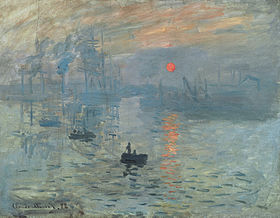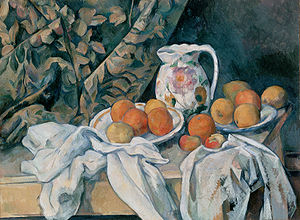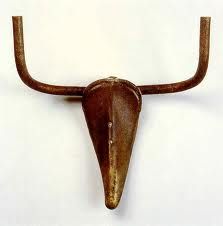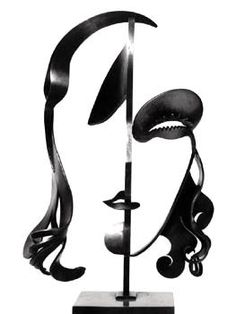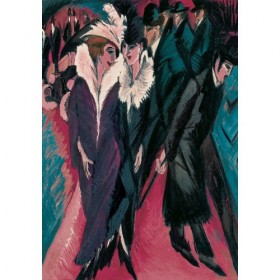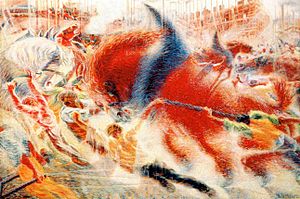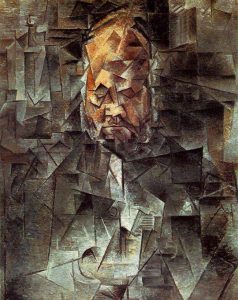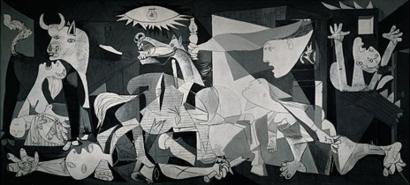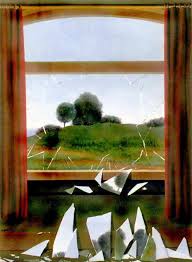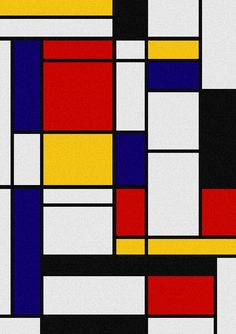Fundamentos Del Arte II

- 1.
¿Reconoces al autor de esta obra?
- 2.
¿Quién aparece retratado pintando en su estudio flotante? ¿Quién es el autor del cuadro?
- 3.
¿Con qué artista neoimpresionista asocias la técnica del puntillismo?
- 4.
¿Qué artista precedente al Impresionismo se inspiró en numerosas obras de Goya?
- 5.
¿Qué artista realiza más de 200 pinturas sobre un mismo tema que le obsesiona durante los últimos años de su vida?
- 6.
Los futuristas decían que un automóvil era más bello que ......
- 7.
¿Quienes son los dos autores del monumento a Apollinaire?
- 8.
Constantin Brancusi es el primer escultor abstracto
- 9.
¿Quiénes son los dos autores del Manifiesto realista?
- 10.
¿Quién puede ser el autor de esta obra?
- 11.
Explica brevemente (10 líneas) la concepción visual del arte cubista
- 12.
¿A qué dos artistas debemos la invención del cubismo?
- 13.
¿Cuál es la principal aportación de esta obra?
- 14.
Define el concepto de ready made
- 15.
Relaciona Surrealismo y Psicoanálisis
- 16.
¿Qué obra surrealista relacionarías con el Jardín de las Delicias?
- 17.
¿Quién es el fundador de la pintura abstracta?
- 18.
Enumera dos obras de Kazimir Malevich
- 19.
¿Qué características dirías que definen el movimiento Impresionista? (varias posibles respuestas)
- A.
Pincelada suelta
- B.
Inspiración en el pasado
- C.
Contrastes de blancos y negros
- D.
Pinturas realizadas al aire libre
- E.
Paisajes que expresan el estado de ánimo del artista
Correct Answer(s)
A. Pincelada suelta
D. Pinturas realizadas al aire libreExplanation
The characteristics that define the Impressionist movement are loose brushwork and paintings done outdoors. Impressionist artists aimed to capture the fleeting effects of light and atmosphere, and they achieved this by using quick, visible brushstrokes and by painting en plein air. This allowed them to capture the changing colors and textures of the natural world in a more immediate and spontaneous way. The loose brushwork and outdoor painting also contributed to a sense of movement and energy in their works.Rate this question:
-
- 20.
¿Quién es el autor de esta obra?
- A.
Monet
- B.
Manet
- C.
Renoir
- D.
Sisley
- E.
Pisarro
- F.
Seurat
- G.
Sorolla
Correct Answer
D. SisleyExplanation
Sisley is the correct answer because the question asks for the author of the work, implying that the options are artists. Among the given options, Sisley is the only artist mentioned, so he must be the author of the work in question.Rate this question:
-
- 21.
¿Qué artista afirma que la naturaleza puede reducirse a esferas, conos y cilindros?
- A.
Cézanne
- B.
Van Gogh
- C.
Gauguin
- D.
Picasso
Correct Answer
A. CézanneExplanation
Cézanne es el artista que afirma que la naturaleza puede reducirse a esferas, conos y cilindros. Esta afirmación se basa en su estilo artístico conocido como el cubismo, donde buscaba simplificar las formas naturales en figuras geométricas básicas. Cézanne creía que al reducir la naturaleza a estas formas simples, se podía capturar su esencia y estructura subyacente. Su enfoque revolucionario influyó en muchos artistas posteriores y es considerado uno de los precursores del arte moderno.Rate this question:
-
- 22.
¿Quién es el autor de esta obra?
- A.
Boccioni
- B.
Jean Arp
- C.
Duchamp
- D.
Picasso
Correct Answer
D. PicassoExplanation
Picasso is the correct answer because he is a renowned artist who created many famous works. While Boccioni, Jean Arp, and Duchamp were also artists, Picasso is the most well-known and recognized among them. Therefore, it is likely that he is the author of the given work.Rate this question:
-
- 23.
¿Quién es el autor de la escultura Greta Garbo con mechón de pelo ?
- A.
Julio González
- B.
Picasso
- C.
Pablo Gargallo
- D.
Henry Moore
Correct Answer
C. Pablo GargalloExplanation
Pablo Gargallo is the author of the sculpture "Greta Garbo con mechón de pelo."Rate this question:
-
- 24.
¿Qué artistas desarrollaron la escultura cinética?
- A.
Alexander Calder
- B.
Antoine Pevsner
- C.
Boccioni
- D.
Eusebio Sempere
Correct Answer(s)
A. Alexander Calder
D. Eusebio SempereExplanation
Alexander Calder y Eusebio Sempere fueron los artistas que desarrollaron la escultura cinética. Alexander Calder fue un escultor y artista estadounidense conocido por sus esculturas móviles que se movían con el viento o con la interacción del espectador. Por otro lado, Eusebio Sempere fue un escultor y pintor español que también experimentó con la escultura cinética, creando obras que incorporaban movimiento y cambios de luz. Ambos artistas fueron pioneros en el desarrollo de esta forma de arte que busca explorar el movimiento y la interacción con el espectador.Rate this question:
-
- 25.
¿Qué artista, exponente de la escultura vasca, es autor de Caja vacía?
- A.
Eduardo Chillida
- B.
Jorge Oteiza
- C.
Eusebio Sempere
Correct Answer
B. Jorge OteizaExplanation
Jorge Oteiza is the correct answer because he is a renowned artist and exponent of Basque sculpture. He is known for his minimalist and abstract style, which often explores the concepts of emptiness and void. "Caja vacía" translates to "empty box" in English, and it is a famous sculpture created by Oteiza. This artwork reflects his interest in negative space and the absence of form, making him the likely author of "Caja vacía."Rate this question:
-
- 26.
¿Qué pintor expresionista reflejó en sus pinturas escenas de calles?
- A.
Robert Wiene
- B.
Munch
- C.
Kirchner
Correct Answer
A. Robert Wiene -
- 27.
¿Qué valores celebraba el Futurismo?
- A.
La tradición clásica
- B.
La máquina y el automóvil
- C.
La guerra y la violencia
- D.
El patriotismo
- E.
La naturaleza
- F.
La fuerza de la mujer
- G.
El dinamismo de la vida en la ciudad
Correct Answer(s)
B. La máquina y el automóvil
C. La guerra y la violencia
D. El patriotismo
G. El dinamismo de la vida en la ciudadExplanation
The Futurismo movement celebrated the values of the machine and the automobile, as they believed in the power of technology and progress. They also celebrated war and violence, seeing them as a means to cleanse society and create a new world. Patriotism was another value celebrated by Futurismo, as they believed in the strength and unity of their nation. Lastly, they celebrated the dynamism of city life, embracing the fast-paced and modern lifestyle.Rate this question:
-
- 28.
El retrato de Ambroise Vollard pertenece al cubismo..
- A.
Analítico
- B.
Sintético
Correct Answer
A. AnalíticoExplanation
The correct answer is "Analítico". This is because the question is asking about the style or movement to which the portrait of Ambroise Vollard belongs. The term "cubismo" refers to the artistic movement known as Cubism, which was characterized by the analysis and deconstruction of forms and objects into geometric shapes and multiple viewpoints. Therefore, the portrait of Ambroise Vollard is classified as belonging to the Analytical Cubism style.Rate this question:
-
- 29.
¿Es cubista?
- A.
Si
- B.
No
Correct Answer
B. NoExplanation
The question is asking if something is cubist. The answer "No" indicates that it is not cubist.Rate this question:
-
- 30.
¿Quién es el autor de obras como La llave de los campos o Ceci n'est pas une pipe ?
- A.
Max Ernst
- B.
René Magritte
- C.
Salvador Dali
- D.
Marcel Duchamp
Correct Answer
B. René MagritteExplanation
René Magritte es el autor de obras como "La llave de los campos" y "Ceci n'est pas une pipe". Magritte fue un pintor surrealista belga conocido por su estilo distintivo y su exploración de la relación entre las palabras y las imágenes en su arte. Sus obras a menudo presentan objetos comunes en contextos inusuales, desafiando las expectativas del espectador y cuestionando la naturaleza de la realidad. "La llave de los campos" y "Ceci n'est pas une pipe" son ejemplos destacados de su enfoque surrealista y su interés en desafiar la percepción y la representación de la realidad.Rate this question:
-
- 31.
Esta obra se adscribe al suprematismo ruso
- A.
Verdadero
- B.
Falso
Correct Answer
B. FalsoExplanation
Esta afirmación es falsa porque el suprematismo ruso se refiere a un movimiento artístico desarrollado en Rusia a principios del siglo XX, liderado por el pintor Kazimir Malevich. El suprematismo se caracterizaba por el uso de formas geométricas básicas, como cuadrados y círculos, en composiciones abstractas. Sin embargo, la frase "Esta obra se adscribe al suprematismo ruso" no nos proporciona información suficiente para determinar si es verdadera o falsa, ya que no se menciona ninguna obra en particular.Rate this question:
-
Quiz Review Timeline +
Our quizzes are rigorously reviewed, monitored and continuously updated by our expert board to maintain accuracy, relevance, and timeliness.
-
Current Version
-
Mar 21, 2023Quiz Edited by
ProProfs Editorial Team -
May 28, 2020Quiz Created by
Laura
 Back to top
Back to top




















